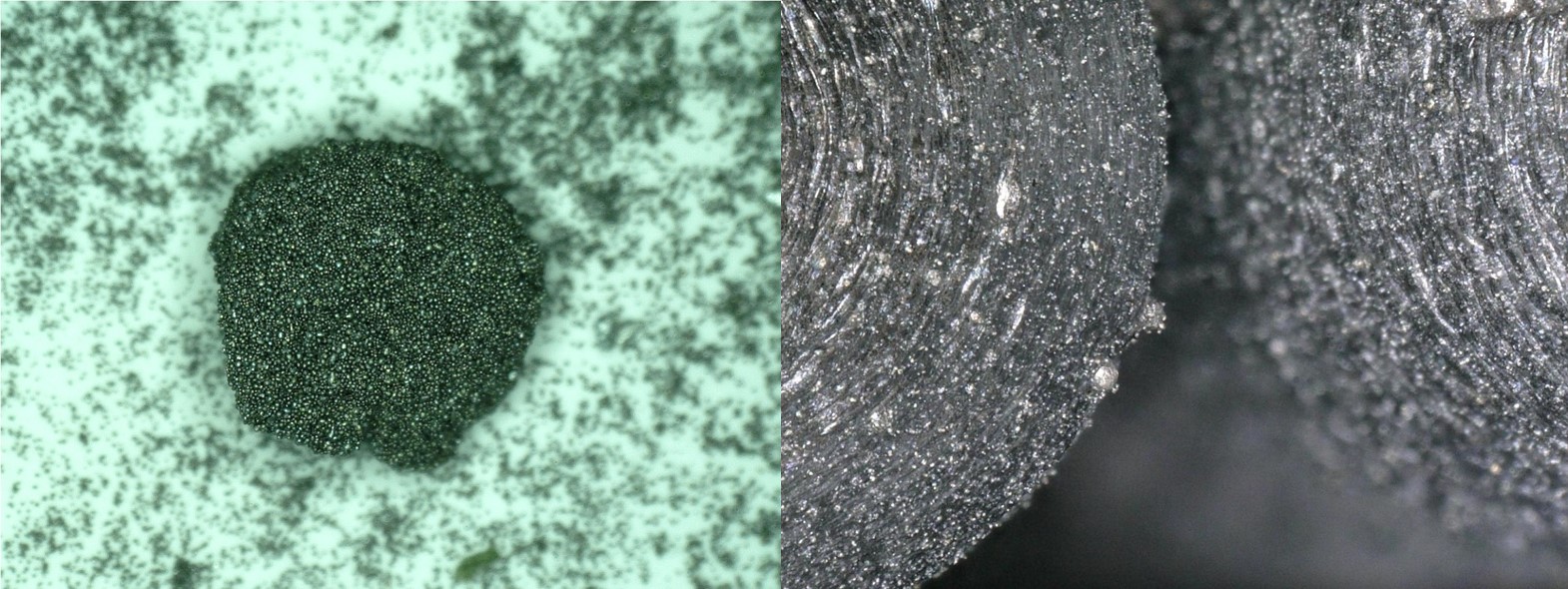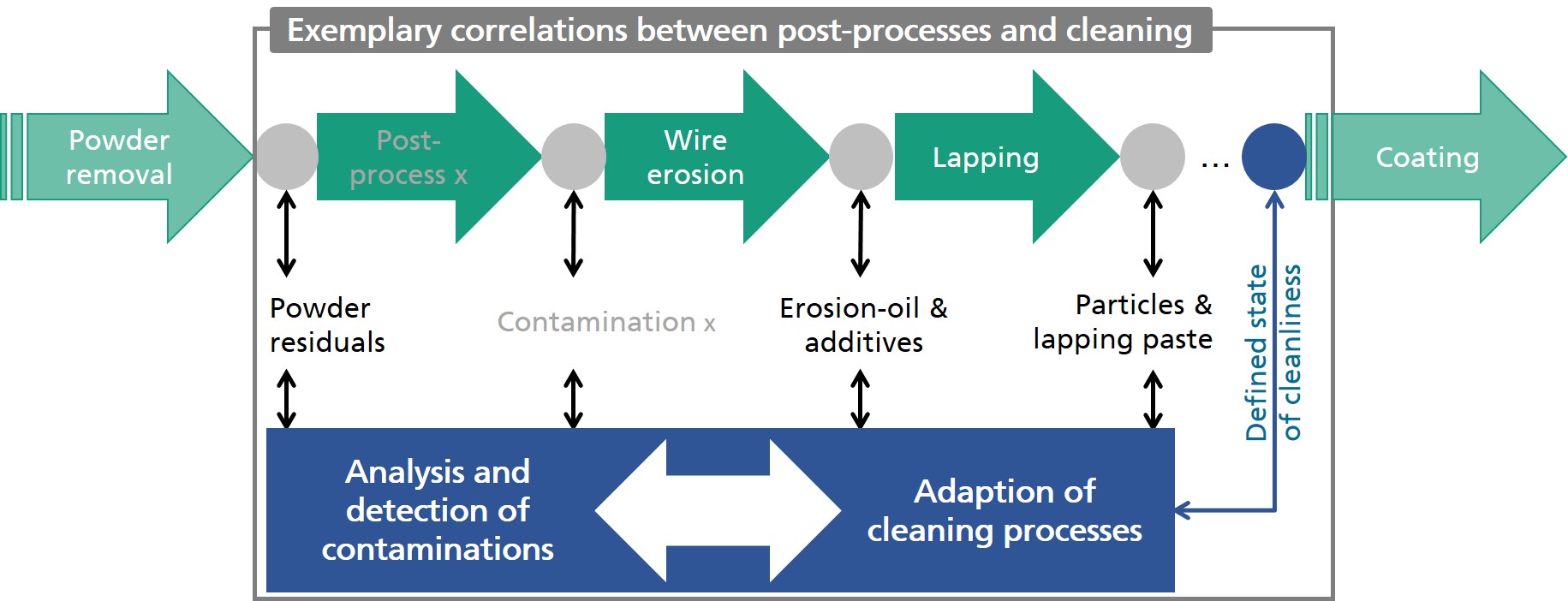Additive manufacturing – challenges for component cleaning
The advantage of additive manufacturing of being able to generate complex structures (e.g., filigree lattice structures, channels close to the contour, joints, etc.) also results in the disadvantage of the process-related accumulation of filmic and particulate impurities in fine and thus difficult-to-access gaps or channels in the component. Due to this, the cleaning concepts currently available on the market cannot be transferred directly. For example, some cleaning physics are not sufficient to guarantee process-reliable removal of contaminants in areas that are difficult to access. Particularly in the case of additively manufactured components, such as those generated at the MULTIMATERIAL Center Augsburg, the cleaning process must be adapted to geometries and the materials contaminants to be cleaned. Choosing the wrong technologies or parameters can cause damage to the components due to chemical, thermal or physical effects.



